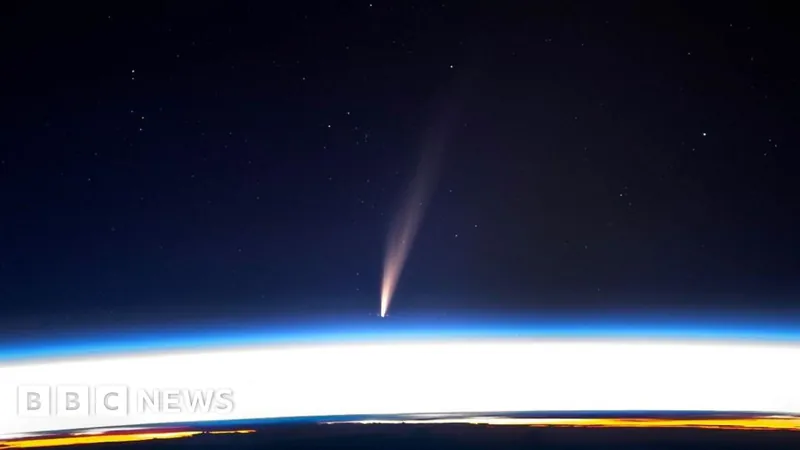
Prepare for a Cosmic Spectacle: Rare Comet Could Be Visible for the First Time in 160,000 Years!
2025-01-13
Author: Jacques
Prepare for a Cosmic Spectacle: Rare Comet Could Be Visible for the First Time in 160,000 Years!
A once-in-a-lifetime astral event is just around the corner as Comet C/2024 G3 (Atlas) graces our skies for the first time in an astounding 160,000 years. NASA has confirmed that this bright celestial body could be visible to the naked eye in the upcoming days, sparking excitement among skywatchers and astronomy enthusiasts alike.
According to NASA, predicting the future brightness of comets can be a tricky endeavor, but C/2024 G3 has the potential to shine as brightly as Venus. As of this Monday, the comet reached perihelion—the closest point in its orbit to the Sun—significantly influencing its visibility. Experts remark that Monday night may be your best chance to catch a glimpse of this spectacular sight.
While the exact viewing sites remain uncertain, it appears that those in the southern hemisphere will have the upper hand in spotting this incredible comet. Originally detected last year by NASA's Asteroid Terrestrial-impact Last Alert System, it is classified as a "sun-skirting" comet, with current calculations indicating it will skim about 8.3 million miles from the Sun.
Dr. Shyam Balaji, a researcher in astroparticle physics and cosmology at King's College London, emphasizes the unique nature of this celestial event, dubbing it a rare occurrence that will not happen again for over 160,000 years. He advises celestial enthusiasts to be vigilant, noting, “Opportunities to spot the comet may occur in the days surrounding perihelion, depending on local conditions and the comet's behavior.
For those residing in the southern hemisphere, Dr. Balaji recommends looking towards the eastern horizon just before sunrise for an optimal viewing experience. After perihelion, try scanning the western horizon at sunset for a potential sighting. However, he cautions that although the comet is expected to be “quite bright,” its visibility may still be unpredictable, and previous comets have often fallen short of initial brightness predictions.
Skywatchers in the northern hemisphere, including the UK, may face challenges due to the comet's position relative to the Sun. Still, don’t give up hope! Clear nights and determined stargazers may yield rewarding results.
For real-time updates on visibility, consider checking your local weather forecast to find out if the skies are clear enough for a potential comet sighting. This extraordinary event is just on the horizon—don’t miss the chance to witness a rare cosmic wonder!



 Brasil (PT)
Brasil (PT)
 Canada (EN)
Canada (EN)
 Chile (ES)
Chile (ES)
 Česko (CS)
Česko (CS)
 대한민국 (KO)
대한민국 (KO)
 España (ES)
España (ES)
 France (FR)
France (FR)
 Hong Kong (EN)
Hong Kong (EN)
 Italia (IT)
Italia (IT)
 日本 (JA)
日本 (JA)
 Magyarország (HU)
Magyarország (HU)
 Norge (NO)
Norge (NO)
 Polska (PL)
Polska (PL)
 Schweiz (DE)
Schweiz (DE)
 Singapore (EN)
Singapore (EN)
 Sverige (SV)
Sverige (SV)
 Suomi (FI)
Suomi (FI)
 Türkiye (TR)
Türkiye (TR)
 الإمارات العربية المتحدة (AR)
الإمارات العربية المتحدة (AR)